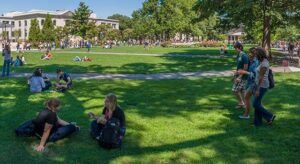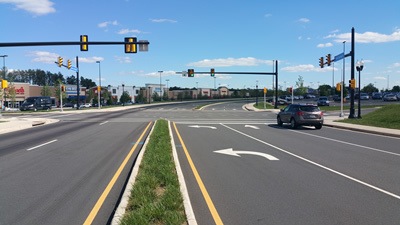 Gorove Slade was the transportation planner for two American University Campus Plan master planning teams – in 1999/2000 and again in 2008-2011. These plan updates were required by the District of Columbia and covered the main campus and the Tenley Circle campus.
Gorove Slade was the transportation planner for two American University Campus Plan master planning teams – in 1999/2000 and again in 2008-2011. These plan updates were required by the District of Columbia and covered the main campus and the Tenley Circle campus.
In both assignments, the team worked closely with adjacent community organizations to address their concerns about campus traffic and parking that sometimes spills into the neighborhoods. The University’s traffic and parking management system and demand reduction programs were updated to better manage these problems.
For the main and Tenley Circle campuses, Gorove Slade prepared traffic and parking studies of projected future traffic conditions based on student, faculty and staff projections, housing plans, and the effectiveness of the enhancements to the demand management measures. The firm worked with campus planners on the physical reconfiguration of campus roads and pedestrian walks.
For the 2000 plan, Gorove Slade worked with the law school administration to adjust the scheduling of classes to ensure that parking demand would not exceed the available supply of campus parking. The team also examined the AU shuttle bus system serving both campuses and the law school, providing access to Metrorail, off-campus housing and administrative offices, and collaborated with campus architects on the design of new parking facilities including the garage that has been constructed as part of the Katzen Arts Center.
Beginning in 2008 and concluding in 2011, Gorove Slade completed the transportation sections of the Master Plan update. Gorove Slade’s report summarized the transportation impacts of the overarching 2011 Plan, outlined short- and long-term recommendations to mitigate potential impacts, and outlined a Transportation Demand Management (TDM) program for the University. The 2011 Plan included the following recommendations: Maintain and improve the AU Transportation Demand Management (TDM) policies and programs; Improve conditions on major roadways to minimize conflicts between pedestrians and vehicles; Work with the community and District and Federal agencies towards a long-term solution for Ward Circle.
See More:
Client Type:
Land Use:
Service:
- Data Collection,
- Parking Studies,
- Traffic & Transportation Studies,
- Transportation Demand Management,
- Transportation Modeling
